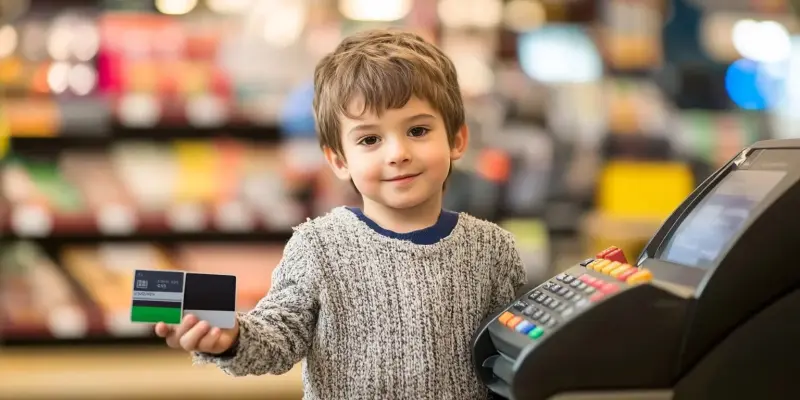Imagine a world where kids can easily purchase their favorite treat at a local bakery using a simple tap of their wrist, just as effortlessly as adults do with their smartphones. With digital payments becoming an integral part of daily life, Google Wallet is paving the way for kids to securely join the cashless society.
Redefining Children’s Financial Experiences
As children increasingly interact with technology from a younger age, integrating financial literacy into their digital routines has become essential. However, parents remain concerned about the security and financial responsibility that come with digital payments. Google’s latest innovation addresses these concerns, offering a secure environment for kids to manage their money.
Understanding the Tap-To-Pay Feature
Google Wallet’s newest tap-to-pay functionality enables children to make quick, simple payments without the need for complicated PINs. Utilizing NFC technology, kids can effortlessly purchase snacks or event tickets by tapping their device. Initially, this feature will be available in the United States, United Kingdom, Spain, Australia, and Poland, with plans to expand globally. This rollout underscores Google’s commitment to creating a worldwide standard for safe digital financial interactions for younger users.
Parental Controls: Ensuring Safety
To ensure children’s digital transactions remain secure, Google Wallet has implemented comprehensive parental controls. Parents receive real-time alerts for every transaction their child makes, fostering transparency. Additionally, parental consent is required to add payment cards to Google Wallet. Through the Family Link app, parents can monitor and control their child’s spending, reinforcing financial accountability.
Collaborating with GoHenry and Emphasizing Financial Education
In line with the growing emphasis on financial education, Google Wallet has partnered with GoHenry by Acorns. GoHenry is dedicated to helping kids develop smart money habits, integrating financial education with practical application. This collaboration also includes the integration of GoHenry cards into the Fitbit Ace LTE smartwatch for kids, providing a seamless tap-to-pay experience. Noah Kerner, CEO of Acorns, emphasized the importance of such partnerships in promoting responsible financial habits among children.
Context and Security: Insights from Visa’s Study
A Visa study focusing on security awareness in digital payments within the Central Europe, Middle East, and Africa (CEMEA) region revealed that although a significant portion of consumers in Kuwait practice security measures like two-factor authentication, gaps in fraud detection remain. With 94% of respondents taking precautions in digital transactions, only 44% have a comprehensive understanding of fraud detection. This highlights the necessity for ongoing educational initiatives to enhance consumer awareness.
Building Trust and Developing Secure Practices
To support parents in ensuring their children’s secure digital transactions, practical strategies are essential. Setting up Google Wallet with parental controls provides a robust starting point. Additionally, initiatives by companies like Visa focus on developing educational programs about digital security. Visa’s exploration into blockchain and central bank digital currency (CBDC) technologies exemplifies the company’s commitment to innovative, secure financial solutions.
The launch of Google Wallet’s tap-to-pay feature for kids signifies a significant milestone in the evolution of digital payments. By equipping children with the tools for secure and responsible spending, while providing parents with comprehensive monitoring capabilities, both financial literacy and safety are enhanced. As these technologies continue to evolve, the focus on merging convenience with security will remain paramount, fostering a new generation of financially literate, tech-savvy individuals.

